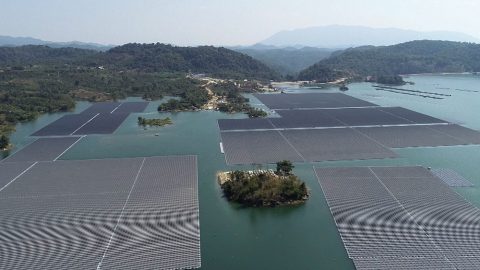
Illustration
The construction of infrastructure system is the most important stage for floating solar power exploitation. Thanks to the constant efforts in research and application of many large companies in the world, the difficulties in construction and exploitation are gradually being resolved.
Due to the instability of the water surface and the oxidation problem, the material as well as the structure of the buoys and floats are factors that are always paid special attention. Buoys – often composed of many floating plastic buoys, are assembled into a giant raft. Floats are usually made of HDPE (polyethylene-ethylene), a material with tensile strength, UV protection and corrosion resistance. HDPE is a material that does not affect water quality and is recyclable.
Currently, most floating solar cell systems are built on freshwater areas and have high surface stability as on large lakes. Systems built on the sea face a huge problem with sea salt – the main factor that shortens material life. However, the launch of Suntech Power’s Polymer anti-corrosion framework has opened up development opportunities for exploiting solar energy at sea.
Another area of concern by many companies is the mooring system. In the case of a floating solar system, the anchoring system holds the panels in the same position and prevents them from being overturned or floating. Installing anchoring system can be challenging and costly in deep water conditions.
A typical example of this system is the Hydrelio sea anchoring system of Ciel & Terre. The system has been tested by ONERA (French space laboratory) to withstand winds of up to 190 km / h (118mp / h).
Besides, Israel’s Solaris Synergy does not use anchoring system, instead it uses a grid system that links the panels and still ensures stable solar panels on the water. Solaris Synergy’s mesh platform allows solar panels to float independently of each other while maintaining a predefined geometric configuration using a spider-connected tension cable system. by a rigid floating cylinder system.
Although still in the research and development phase, the floating solar power system has been gradually determining its position in the energy industry, thanks to its economic and potential benefits. Unlimited space expansion.
Productivity and Quality Office